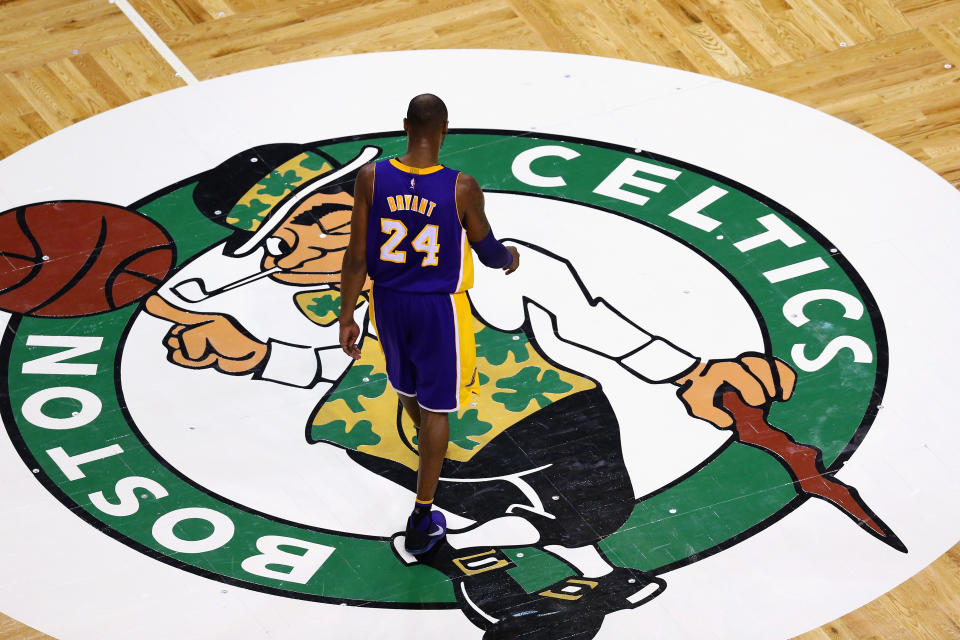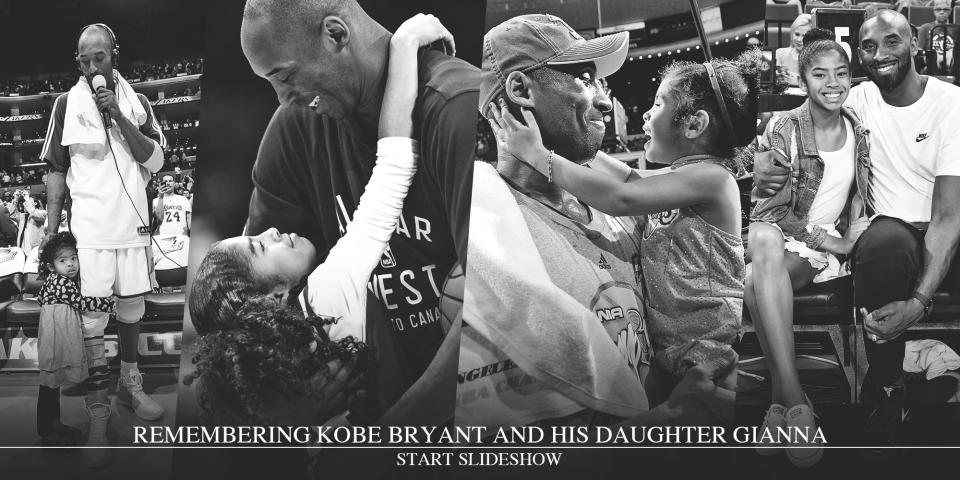Kobe Bryant never forgot ... and won't be forgotten
As the door swung open to the Lakers locker room following a January 2010 victory at Boston, a single baritone voice from the shower cut through the postgame din.
It belonged to Kobe Bryant, who mockingly belted out the chorus to the very same Dropkick Murphy’s anthem that once aggravated him to his core when the Celtics adopted it as their victory song during the 2008 NBA Finals.
Eager to remind himself of the heartbreak of watching Boston celebrate a championship at his expense, Kobe adopted “I’m Shipping Up to Boston” as the soundtrack to his workouts for the next two years. He then reveled in singing the song himself under vastly different circumstances after beating the rival Celtics with a go-ahead fadeaway jumper with 7.3 seconds left.
That memory was one of the first to pop into my mind Sunday afternoon after learning of Kobe’s stunning and tragic death. It’s the anecdote I always share with friends or family when they ask what Kobe was like or what made him different.
I covered Kobe from 2008-10 as the Lakers beat writer for the Riverside Press-Enterprise, one of four major Los Angeles-area newspapers at the time. We didn’t have a close relationship or anything — you had a better chance of getting a private interview with a U.S. president than with Kobe during that era — but I did have the privilege of observing one of basketball’s most fascinating figures up close at a pivotal stage in his career.
By 2008, Kobe was no longer No. 8, the brash, dynamic 6-foot-6 wing who arrived in the NBA straight out of high school hell-bent on establishing himself as one of the greatest to ever play the game. The Kobe that I covered was No. 24, a battle-scarred warrior stubbornly determined to stay on top for as long as he possibly could, age and injuries be damned.
He’d play through fractured fingers and sprained ankles like they were nothing. He’d put himself through grueling predawn workouts while his rivals were still asleep. He’d travel from his Orange County home to Staples Center via a chartered helicopter or in the back of a customized van so he could use the commute to watch more film and ice his sore limbs.

Aware that he could no longer attack the rim with the quickness and athleticism that he did in his mid-20s, Kobe sought to revamp his game before the 2009-10 season. He emailed Hakeem Olajuwon to ask if the legendary former Houston Rockets center would work with him on his low-post footwork and repertoire of moves.
Kobe showcased some of what he learned in front of Olajuwon early that season, scoring 41 points in a victory at Houston. Each time he took Shane Battier into the post and scored over him turning with either shoulder — Kobe’s version of the Dream Shake — he’d stare into the section of the stands where Olajuwon was seated.
“He looked at me to confirm, 'I'm using what you taught me,' " Olajuwon told me that night. "That was the greatest gift for me. It was wonderful."
Of course Kobe didn’t usually draw motivation from the opportunity to pay homage to his fellow legends. More often than not, it was a perceived slight that drove him.
There was the day in Houston that Kobe responded to the shoving, grabbing and smack-talking of Ron Artest with a clenched jaw and an 18-point fourth-quarter barrage. Or the 61 points he dropped at Madison Square Garden to gain the upper hand over longtime Knicks fan Spike Lee before they met up after the game.
“I didn’t feel like sitting next to him and hearing him talk trash about the Knicks, so that was added incentive,” Kobe said that night. “He’s going to get an earful.”
By the end of the 2010 NBA Finals, Kobe had secured his fifth NBA title and sweet revenge on the Celtics and I had moved on to another job. I watched from afar as he at last began to mellow with age, talking more openly about his goals post-basketball and more regularly flashing his charm and self-deprecating sense of humor with reporters instead of treating the media as the enemy.
What became clear is how much Kobe still had to offer in retirement. He was a devoted father of four, a talented storyteller, a gifted entrepreneur with an intellectually curious spirit. Above all else, he looked happy.
On Sunday morning, Kobe left the world too soon, a dad taking his daughter to play basketball until tragedy struck. He leaves behind a grieving family, a sport in mourning and a fan base in disbelief.
But while Kobe may be gone, his memory lives on through the lives that he touched.
A few years ago, I wrote a story on the more than 14,000 boys named after Kobe during his NBA career. Some of the oldest of that legion of Kobes had just begun to gain attention for basketball at the high school or college level.
So while the NBA will never have another Kobe, perhaps it may yet get a namesake.
More from Yahoo Sports:



